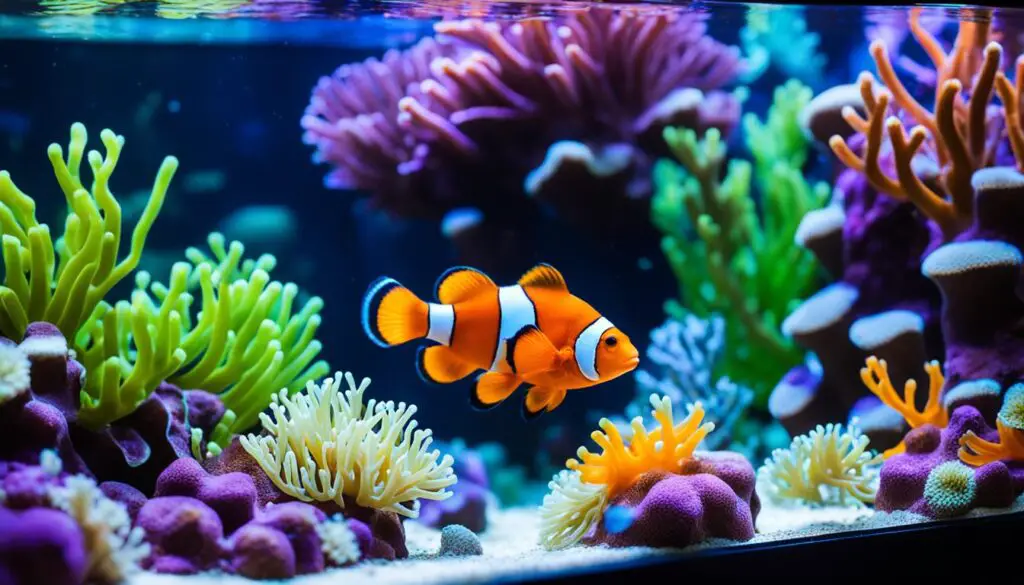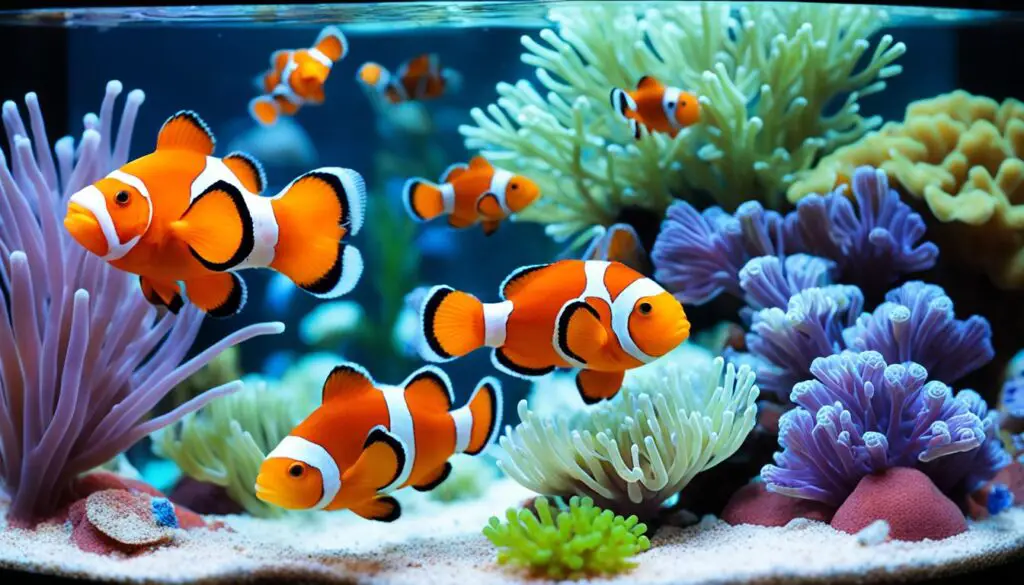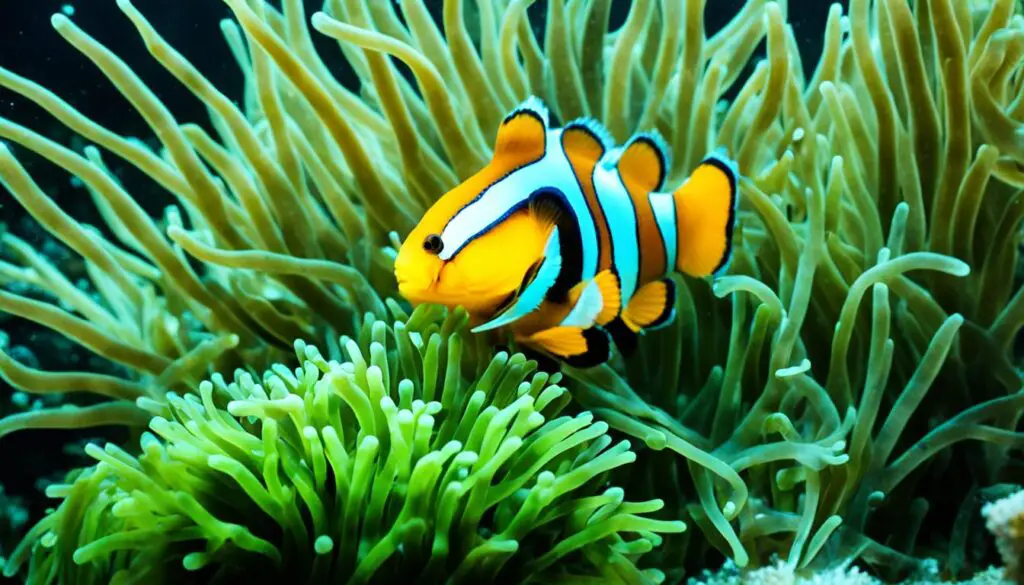Where Is The Stomach Of A Starfish Located
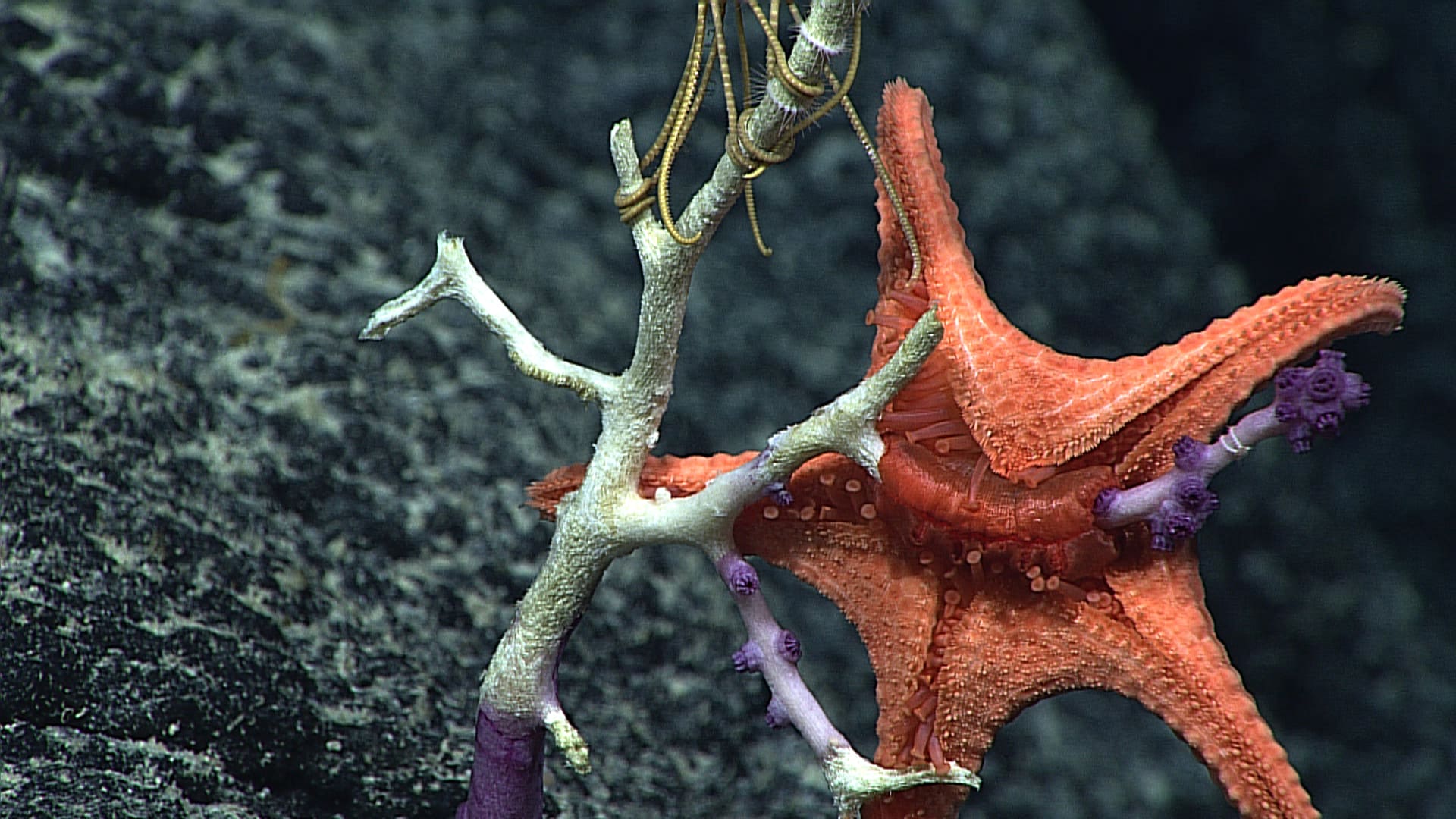
Introduction
Where Is The Stomach Of A Starfish Located: The fascinating anatomy of a starfish often sparks curiosity, and one of the intriguing questions that arise is, “Where is the stomach of a starfish located?” These enigmatic marine creatures, despite their deceptively simple appearance, possess a remarkable digestive system that sets them apart from many other animals.
The stomach of a starfish is not where one might expect, such as in a centralized location like the human abdomen. Instead, it is a distributed and unconventional structure that reveals the uniqueness of starfish biology. At the center of their body, known as the central disc, lies the central stomach. This organ functions as a primary hub for digestion, but what makes it truly exceptional is its ability to extend outside the body.
Starfish have a distinct feeding mechanism where they use their tube feet to grasp and pry open the shells of mollusks and other prey. Once a small opening is created, the starfish everts its stomach out through its mouth, which is situated on the underside of its central disc. This externalized stomach then envelops and digests the prey externally, breaking down the food into a slurry that can be easily ingested.
This extraordinary adaptation showcases the evolutionary ingenuity of starfish and highlights the diversity of life forms that thrive in our oceans. Understanding where the stomach of a starfish is located is not just a matter of anatomy; it’s a window into the marvels of marine biology.
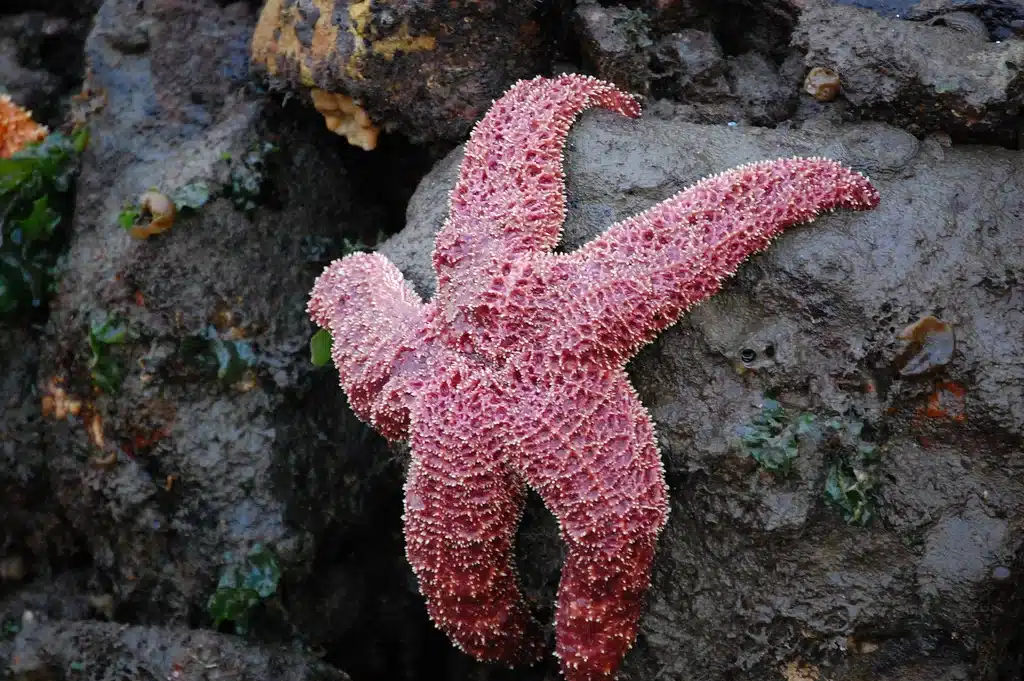
What can starfish do with its stomach when feeding on clams and oysters?
When some species of starfish find a tasty snack, such as a mussel or an oyster, they extend their stomach out of their mouth to digest the soft parts of their prey. This creates a soup-like substance that they then slurp back into their body to finish off the feast.
Starfish exhibit a remarkable feeding strategy when dining on clams and oysters, one that sets them apart from most other creatures. When a starfish encounters a closed shell of a clam or an oyster, it faces a seemingly impenetrable barrier. However, their adaptive biology equips them to overcome this challenge.
What starfish can do with their stomach is truly astonishing. They have the ability to evert, or turn inside out, their stomach. The process begins when the starfish uses its tube feet to latch onto the shell’s edges. Gradually, it applies gentle pressure, creating a small opening. Once this gap is established, the starfish extends its stomach through its mouth, which is located on the underside of the central disc.
The stomach, now outside the body, envelops the trapped prey, covering it completely. Enzymes are then secreted from the stomach’s lining, initiating the digestion process externally. These enzymes break down the clam or oyster’s soft tissues into a semi-liquid form. The starfish can then draw this partially digested food back into its body for absorption and further digestion in its central stomach.
This extraordinary feeding mechanism allows starfish to consume prey that would otherwise be inaccessible due to their protective shells. It’s a testament to nature’s ingenuity and the diversity of feeding strategies found in the animal kingdom, showcasing how starfish have evolved a highly effective means of obtaining their nourishment.
Do starfish have stomachs?
They have two stomachs…and the way they eat might make your skin crawl. The anatomy of a sea star’s digestive system is quite alarming, and has an incredibly unique two-part stomach system.
Yes, starfish do have stomachs, but their stomachs are unlike those found in most animals. Starfish possess a unique and fascinating digestive system that sets them apart from many other creatures.
A starfish’s digestive system is decentralized, consisting of two stomachs: a cardiac stomach and a pyloric stomach. The cardiac stomach is the one that’s often referred to as the “external” stomach. This stomach is located in the central disc of the starfish, which is the part that connects its multiple arms. It serves as a primary hub for digestion.
However, what makes starfish truly remarkable is their ability to extend their cardiac stomach outside their body. When they encounter prey with hard shells, like clams or oysters, starfish use their tube feet to create a small opening in the shell. They then evert their cardiac stomach through their mouth, which is on the underside of their central disc, and envelop the prey with it. Digestive enzymes are released from the cardiac stomach to break down the prey’s soft tissues externally.
The partially digested food is then drawn back into the starfish’s body and into the second stomach, the pyloric stomach, where further digestion and nutrient absorption take place. This unique digestive process showcases the incredible adaptability and resourcefulness of starfish in acquiring their sustenance.
What is the role of stomach in starfish?
They have 2 stomachs – the pyloric and the cardiac stomach. To engulf prey, it pushes the cardiac stomach out of the stomach in the centre of the underside. Then it secretes a digestive enzyme to disintegrate its prey.
The stomach in a starfish plays a pivotal role in its digestion and overall survival. Starfish possess a distinctive and decentralized digestive system consisting of two stomachs: the cardiac stomach and the pyloric stomach.
- Cardiac Stomach (External Stomach): The cardiac stomach, often referred to as the “external stomach,” is located in the central disc of the starfish. Its primary function is to initiate digestion when the starfish encounters prey with hard shells, such as clams and oysters. To access the soft tissues of these mollusks, the starfish employs a remarkable feeding mechanism. It uses its tube feet to create a small opening in the prey’s shell and then everts or turns its cardiac stomach outside its body through its mouth. This externalized stomach covers and envelops the prey, secreting digestive enzymes that break down the prey’s soft tissues externally.
- Pyloric Stomach (Internal Stomach): Once the food is partially digested in the cardiac stomach, the starfish retracts its external stomach and draws the semi-liquid mixture back into its body. This partially digested food enters the pyloric stomach, the second stomach, located inside the starfish’s central disc. Here, further digestion occurs, and nutrients are absorbed into the starfish’s circulatory system for distribution throughout its body.
In essence, the stomachs of a starfish allow it to efficiently consume and digest prey that would otherwise be protected by hard shells, demonstrating the remarkable adaptability and resourcefulness of these marine creatures in obtaining their nourishment and thriving in their underwater habitats.
Where is the mouth of a starfish located in relation to the stomach?
Mouth: The sea star’s mouth is located in the center of its body, underneath. Part of the sea star’s stomach connects to its mouth, and when there’s food available, the sea star’s stomach emerges from its mouth to eat.
The mouth of a starfish is located on the underside of its central disc, and its positioning in relation to the stomach is a crucial aspect of the starfish’s unique anatomy and feeding strategy.
In a starfish, the mouth is situated centrally on the ventral side, which is the side facing the substrate or seafloor. This positioning is strategic and functional because it allows the starfish to access its prey effectively. When a starfish encounters a potential meal, such as a clam or oyster with a hard shell, it uses its tube feet and specialized appendages to grasp and manipulate the shell. These actions create a small opening or gap in the prey’s shell.
Now, here’s where the mouth-stomach relationship comes into play: the starfish’s stomach, specifically the cardiac stomach (often called the “external stomach”), is also located within the central disc. To feed on the trapped prey, the starfish everts or turns its cardiac stomach outside its body through its mouth. This externalized stomach envelops the prey, secreting digestive enzymes to break down the soft tissues.
Once digestion begins externally, the partially digested food is drawn back into the starfish’s body through its mouth and into the second stomach, the pyloric stomach (the “internal stomach”). Here, further digestion and nutrient absorption occur.
How does a starfish use its stomach to eat?
The starfish forces open the shell with suction disks on the underside of its body, and then inserts its stomach membranes through its mouth into the opening of the shell. Digestive juices break down the shellfish’s body, which is then absorbed into the starfish’s stomach.
A starfish employs a remarkable and distinctive method of feeding that involves the use of its stomach to consume its prey effectively. This process is as fascinating as it is unique in the animal kingdom.
- Locating and Grasping Prey: When a starfish encounters potential prey, particularly those with hard shells like clams, oysters, or mussels, it uses its tube feet to secure a grip on the shell. The starfish then gradually applies pressure and manipulates the shell, creating a small opening.
- Eversion of the Cardiac Stomach: Once a gap is established in the prey’s shell, the starfish takes the extraordinary step of turning its cardiac stomach inside out. The cardiac stomach is located within the central disc of the starfish. It extends through the starfish’s mouth, which is located on the ventral side of its body (the side facing the substrate or seafloor).
- Enveloping and Digesting the Prey: The externalized cardiac stomach envelops the trapped prey, effectively covering it. The stomach releases digestive enzymes that break down the soft tissues of the prey externally. This unique process allows the starfish to begin digestion outside its body.
- Food Absorption and Retraction: After digestion begins externally, the partially digested food is drawn back into the starfish’s body through its mouth. The food enters the starfish’s second stomach, the pyloric stomach (internal stomach), where further digestion occurs. Nutrients are absorbed into the starfish’s circulatory system for distribution throughout its body.
A starfish uses its stomach in a two-step process: it everts its stomach outside its body to externally digest the prey, and then it retracts the partially digested food for further processing internally. This unique feeding mechanism demonstrates the adaptability and resourcefulness of starfish in acquiring their sustenance.
Do starfish eat with their stomach?
A starfish feeds by first extending its stomach out of its mouth and over the digestible parts of its prey, such as mussels and clams. The prey tissue is partially digested externally before the soup-like “chowder” produced is drawn back into its 10 digestive glands.
Starfish, fascinating marine creatures of the class Asteroidea, possess a unique feeding mechanism that distinguishes them from many other organisms. Unlike humans and many animals, starfish do not have a centralized digestive system. Instead, they rely on a rather peculiar process for nourishment.
At the center of this process is the starfish’s stomach, which is located on the underside of its body. When a starfish encounters potential prey, it employs an ingenious approach: it everts its stomach out of its body. This means that the stomach is turned inside out and pushed through the mouth, allowing it to make direct contact with the prey item.
Once the stomach envelops the prey, it secretes powerful enzymes that begin to break down the prey’s tissues into a digestible form. This process is known as extracellular digestion and is highly efficient. The liquefied nutrients are then absorbed through the stomach lining, providing vital sustenance for the starfish.
Can starfish regrow their stomachs if they are damaged or lost?
Starfish possess a remarkable ability to regenerate, and this includes their digestive system, including their stomachs. If a starfish’s stomach is damaged or lost due to predation, injury, or other environmental factors, it has the capacity to regenerate a new one.
The process of stomach regeneration in starfish is quite astonishing. Specialized cells called neoblasts play a pivotal role in this regenerative ability. Neoblasts are undifferentiated cells that have the potential to develop into various types of specialized cells, including those required for the digestive system.
When a starfish loses its stomach, the neoblasts are mobilized to initiate the regeneration process. They multiply and differentiate, eventually forming the structure of a new stomach. This process can take some time, depending on factors like the age and species of the starfish, as well as the extent of the damage.
Once the new stomach is fully developed, the starfish can resume its feeding activities. This remarkable regenerative capacity not only enables starfish to recover from injuries but also serves as a key survival strategy in their often harsh marine environments.
Why do starfish have this unique digestive system?
The unique digestive system of starfish has evolved in response to the challenges and opportunities presented by their marine habitats. This system provides several distinct advantages that enhance their survival and reproductive success.
Firstly, the ability to evert their stomachs allows starfish to feed on a diverse range of prey. By enveloping their food externally, they can target organisms that may be otherwise inaccessible to creatures with more conventional feeding mechanisms. This adaptability grants starfish a competitive edge in foraging for food resources.
Additionally, the regenerative capacity of their digestive system offers a crucial survival mechanism. In the face of injuries or predation, the ability to regrow their stomachs ensures that starfish can continue to feed and sustain themselves, ultimately contributing to their long-term viability as a species.
Overall, the unique digestive system of starfish is a product of millions of years of evolutionary fine-tuning, enabling them to exploit a wide array of ecological niches and cope with the challenges of their dynamic marine environments. This specialized adaptation stands as a testament to the diverse and ingenious strategies that have evolved in the natural world.
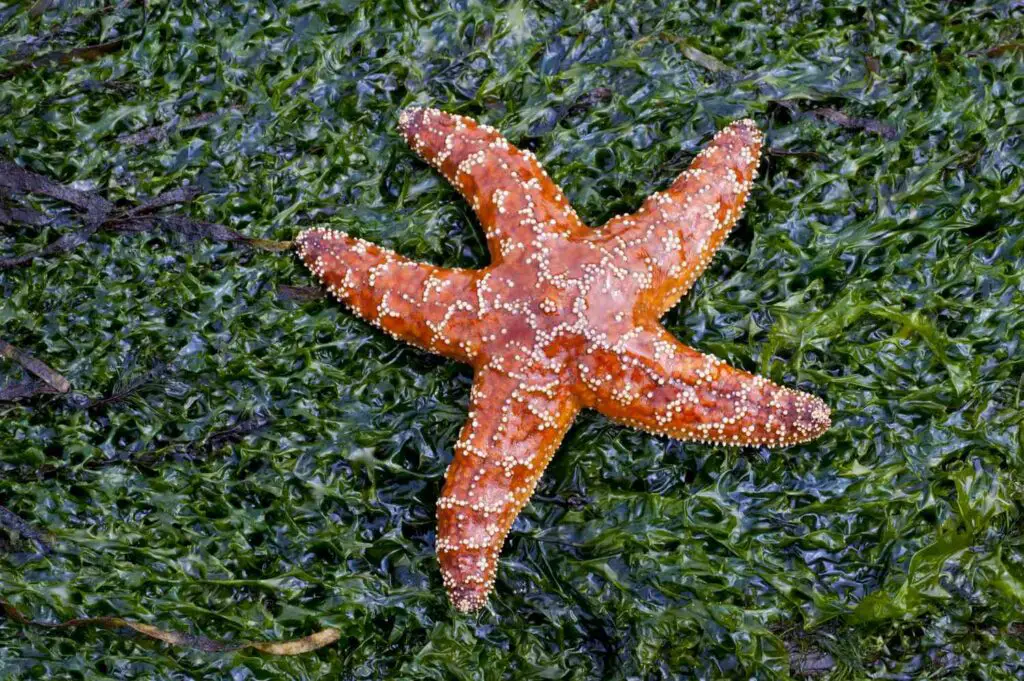
Conclusion
The unique location of a starfish’s stomach is a testament to the wonders of nature’s diversity and adaptation. While many animals have their digestive systems neatly contained within their bodies, starfish take a radically different approach. Their stomach, situated in the central disc, defies convention by being capable of extending outside the body.
This adaptation serves a critical purpose in the starfish’s survival. It allows them to efficiently consume and digest their prey, often shellfish like clams and oysters, which would be otherwise difficult to access. By extruding their stomachs to envelop the prey, starfish eat can access their meals without the need for jaws or teeth, showcasing the resourcefulness of evolution.
Moreover, understanding the stomach’s location in starfish provides valuable insights into marine ecosystems. These creatures play a vital role in controlling populations of certain prey species, contributing to the balance of underwater ecosystems.
The study of starfish anatomy exemplifies the marvels of nature’s solutions to life’s challenges. It reminds us that there is no one-size-fits-all blueprint for survival, and the diversity of strategies in the animal kingdom is boundless. The unconventional location of a starfish’s stomach is a fascinating testament to the endless wonders of the natural world, encouraging us to continue exploring and learning about the intricacies of life on Earth.

